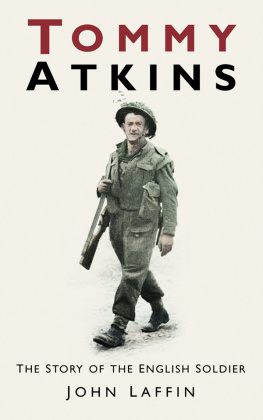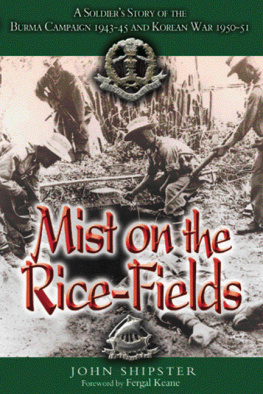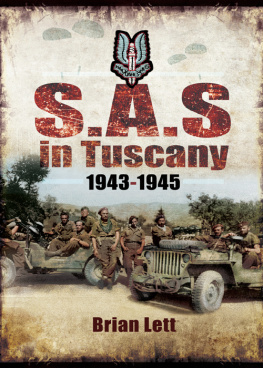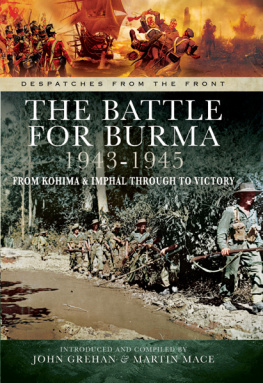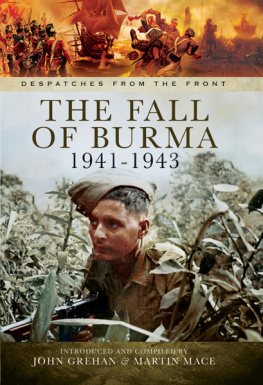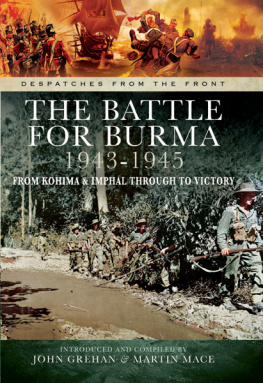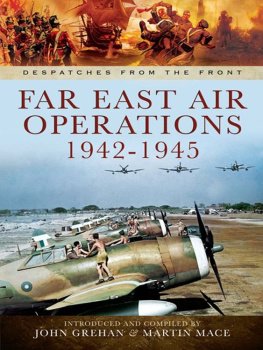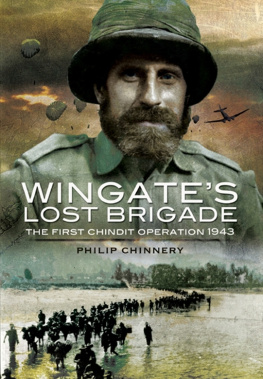
This edition is published by PICKLE PARTNERS PUBLISHING www.picklepartnerspublishing.com
To join our mailing list for new titles or for issues with our books
Or on Facebook
Text originally published in 1948 under the same title.
Pickle Partners Publishing 2013, all rights reserved. No part of this publication may be reproduced, stored in a retrieval system or transmitted by any means, electrical, mechanical or otherwise without the written permission of the copyright holder.
Publishers Note
Although in most cases we have retained the Authors original spelling and grammar to authentically reproduce the work of the Author and the original intent of such material, some additional notes and clarifications have been added for the modern readers benefit.
We have also made every effort to include all maps and illustrations of the original edition the limitations of formatting do not allow of including larger maps, we will upload as many of these maps as possible.
A Model for Modern Nonlinear Noncontiguous Operations: The War in Burma, 1943 to 1945
A Monograph by
Major John Atkins RLC
British Army
TABLE OF CONTENTS
Contents
TABLE OF CONTENTS 4
Abstract
A Model for Modern Nonlinear, Non-contiguous Operations: The War in Burma 1943 to 1945.
A monograph by Major John William Atkins, The Royal Logistic Corps, British Army, 54 pages.
The War in Burma is all too frequently forgotten as a source of relevant military experience. Admittedly it did not have the strategic importance of other theatres such as the Pacific or North West Europe, but it did witness some of the hardest and most bitter fighting of the War. Because of the nature of the terrain, limited allied resources and the type of dispersed operations conducted by the enemy, Allied forces were forced to adapt a new method of warfighting to counter these difficulties. The aircraft and the radio revolutionised the way that the campaign was to be conducted. It was discovered for the first time that formations could be dispersed across the battlespace and could fight independently of a ground line of communication.
The first formation to prove that this approach was possible was the 77 th Brigade, later to earn the title of Chindits and commanded by Brigadier Orde Wingate. Employing Wingates theories of Long Range Penetration for the first time, the Chindits travelled hundreds of miles behind the enemys forward positions and attacked his rear areas and lines of communication. Throughout the operation, they received all their supply requirements from transport aircraft and were never in physical contact with friendly forces. The Chindits conducted a truly joint, mobile, nonlinear and noncontiguous operation. Within a year, conventional brigades, divisions and corps of the British Fourteenth Army and the American/Chinese forces in northern Burma were conducting similar operations, this time supported by many more aircraft for both logistic sustainment and fires. Field Marshall William Slim called it a new way of fighting and suggested that four elements contributed to the new concept: joint operations, the use of mission command, the reduction of the logistic footprint of the force to increase tempo, and the conduct of operations by dispersed forces which are tactically independent but focused on operational-level objectives.
Although they are not new, nonlinear and noncontiguous operations have only recently become a part of US Joint and Army Doctrine, appearing in FM 3-0 for the first time in 2001. Two examples of nonlinear, noncontiguous warfighting operations are provided in FM 3-0; Operation JUST CAUSE in 1989 and the last 36 hours of the ground campaign of Operation DESERT SHIELD in 1991. A brief study of these operations suggests that they are not ideal examples for modern commanders and planners, nor do they comply fully with the description of nonlinear, noncontiguous operations provided in FM 3-0. Both JUST CAUSE and DESERT SHIELD were concluded very quickly against exceptionally weak opposition. Neither operation employed large-scale aerial resupply operations. More importantly, the forces employed in these operations did not undergo any radical alterations in their organisation, concepts or logistic support structures. The research revealed that the Burma campaign provides a more relevant example for commanders and planners of a mobile, joint, nonlinear, noncontiguous operation.
Acknowledgements
I am especially grateful to Mr Ray Clayton, a veteran of the 14 th Army. Mr Clayton served as a junior infantry officer with the Somali Battalion of the 28 th Independent East African Brigade in Burma in 1944 and 1945. The Brigade served as part of the deception operation that assisted the 14 th Armys crossing of the Irrawaddy River in 1945. The 28 th Brigade was in combat continuously for 5 months before being withdrawn. After the War he graduated from Cambridge University and then taught Geography at the Portsmouth Grammar School, southern England, where I was fortunate enough to be one of his pupils. He often spoke of his experiences in Burma and his many anecdotes served to inspire me to study the Burma campaign in greater detail. I met with him again in December 2002 (he was then aged 80) and he helped to paint a superb picture of the operations conducted by his Brigade, and of the terrain and the conditions that prevailed during that period of the campaign. I am indebted to him.
I would like to thank Dr Robert Epstein for his guidance during the production of this monograph. My thanks also go to my Wife, Aly, for her patience and encouragement, for reading and rereading my drafts and for providing such sound advice and endless cups of tea.
INTRODUCTION
In 1995 the terms noncontiguous and nonlinear were introduced into Joint Publication 3-0 (JP 3-0), Doctrine for Joint Operations. They were introduced into the US Armys FM3-0 doctrine manual in 2001, but the concepts of noncontiguous and nonlinear operations were not new. Amphibious operations and, since the 1930s, airborne operations have provided clear examples of modern nonlinear operations. The Germans conducted nonlinear operations during their invasion of Norway in 1940, combining amphibious and airborne attacks against a number of geographically dispersed objectives almost simultaneously. There are also examples of land-based operations that have been nonlinear in nature. Many of the operations in the Egyptian and Libyan deserts during World War Two were nonlinear; separate armoured and motorised columns, supported by tactical airpower, manoeuvred across the desert, paying little attention to their lines of communication or their geographic position relative to other friendly units. {1}
FM 3-0 cites the 1989 US invasion of Panama and the last 36 hours of the ground war in Operation DESERT STORM as examples of nonlinear, noncontiguous warfighting operations (as opposed to Stability and Support Operations (SASO)). Both of these operations took place relatively recently and therefore serve as reasonably sound examples of nonlinear and noncontiguous operations to current US Army planners and junior officers. In both operations, however, the forces involved were confined by concepts, organisations and logistic support structures that would not allow them to fully exploit the potential of the dispersed battlespace. In addition, neither operation was fought against particularly strong or determined opposition, nor were they sustained for any more than ten days. The US committed several formations to Operation JUST CAUSE but, in contrast to the length of the Burma campaign, combat operations only lasted 5 days. The forces, particularly the G3 and G4 planning staffs, did not have to wrestle with the problems that were continually faced by the Allied planning staffs in Burma over weeks, months and even years of campaigning. {2} Neither did they have to compete for resources with other theatres.




